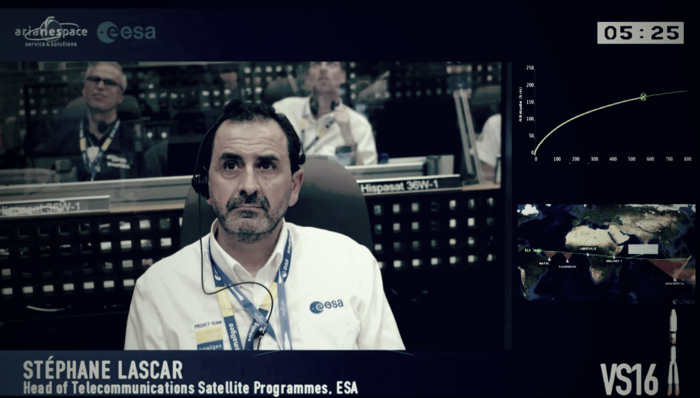ARTES 25 Years of Telecom: Interview with Stéphane Lascar
As ESA’s umbrella programme for telecom, ARTES, celebrates its 25th year, we will be examining why it was set up, how it and the European satcom environment have evolved, the opportunities and challenges that both face today, and what the future holds.
This week we spoke to Stéphane Lascar, Head of the Telecommunications Satellite Programmes Department, who told us how his area supports Europe’s industry.
What achievements are you most proud of?

We are currently managing a portfolio of 11 of these partnerships at different stages of implementation. Four of them have produced healthy operational satellites – Hylas 1, Alphasat, Hispasat 36W-1, and EDRS-A, monitored daily by the department – with many more in the pipeline.
Leveraging on our Telecommunications Satellite Programmes staff’s excellence, strengthened over years of experience with PPPs, we are now a trusted partner for all operators, primes and suppliers.
Can you tell us about the opportunities and challenges facing you currently?
In a sense, our near-term opportunities and challenges are the same. We have some very innovative partnerships reaching important milestones soon. Each one represents a new way forward, both technologically and commercially. The potential this has for Europe’s space sector is exciting but also requires care and dexterity – such is the nature of embarking on anythingtruly‘new’.
The coming year is shaping up as follows: in the next few weeks, we will start the development and qualification of two new projects: the microsatellite platform Triton-X and secure Quantum Key Distribution spacecraft QKDsat, and will also establish a new partnership under our Govsatcom Precursor programme.
Following that, in the summer of next year, we will have two launches: EDRS-A’s data relay companion, EDRS-C, and the first SAT-AIS ship tracking microsatellite E-SAIL.
Finally, at the end of 2019 we expect to have completed integration and testing of two Eutelsat purchases: the Airbus Eutelsat Quantum “chameleon” satellite and the first Thales Alenia Space Spacebus Neo platform mission, Eutelsat Konnect.
What is your vision for your department?
We want to further pursue the development of ambitious flagship programmes in close collaboration with private and public partners, while going even further in terms of innovation and higher risk sharing. We believe this is necessary to develop the next generation of telecom products to support the satcom market evolution and needs in the medium to long term.
What is the most interesting innovation you’ve seen come from your activities?
High data rate optical communications between low Earth and geostationary orbit are a fascinating new development with its roots in several of our projects.
This started with DLR and Tesat’s experimental terminal flown on Alphasat, a PPP with Inmarsat, in July 2013, which established the first link with Copernicus’s Sentinel-1A in November 2014. From there, that same terminal helped commission the first two Sentinels’ optical payloads ahead of the launch of our and Airbus’s pioneering data relay SpaceDataHighway EDRS node. EDRS-A is now performing a commercial service to both Sentinel-1 and -2 pairs, with more than 15,000 links achieved to date.
Space technologies are meant to fly!


